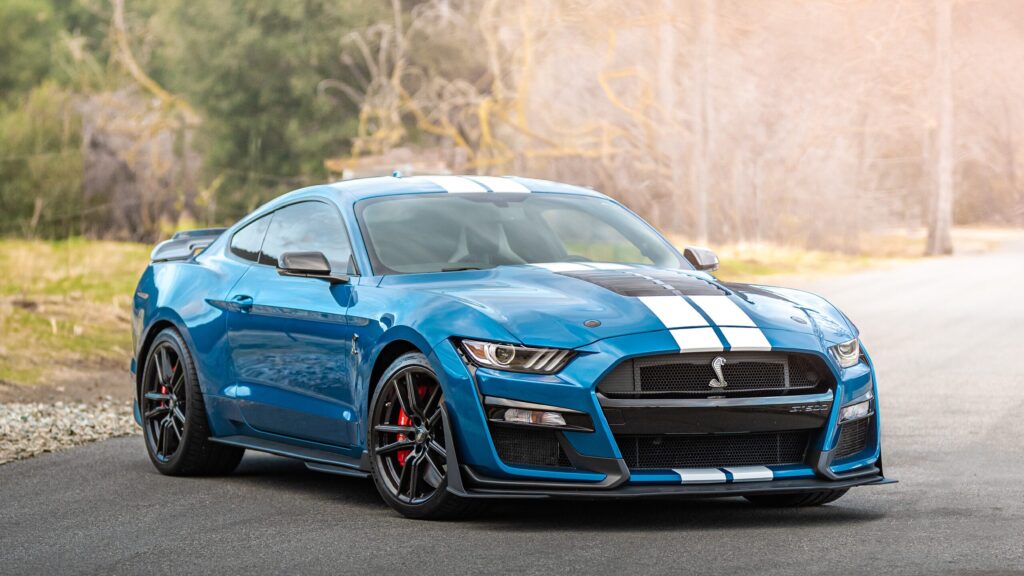
2024 is a big year for the Ford Mustang. Not only does it mark the debut of a new generation, but it’s also the Mustang’s 60th anniversary. To commemorate that milestone, we’re galloping down memory lane, going back to the car’s 1964 introduction and its 1994 reboot before exploring the latest model.
Saddle up for this Mustang retrospective.

The Ford Mustang was nothing short of a revelation when it was introduced in April 1964 as a 1964 ½ model. Boasting sleek styling and peppy performance at an attainable price, the Mustang was like no other car on the market. And it sold like no other car on the market, with a then-record-setting 418,000 deliveries during its inaugural production year. In fact, the Mustang was so successful, it created the pony-car segment, which eventually grew to include cars like the Chevrolet Camaro, Pontiac Firebird, and Dodge Challenger.
Mustang buyers initially chose two body styles—a coupe and a convertible. A fastback joined the lineup for the 1965 model year.
In base form, the Mustang was powered by a thrifty (albeit tepid) six-cylinder engine developing 101 horsepower. Two mid-range V8s were available, but the star of the lineup was a high-performance version of Ford’s 289-cubic-inch V8, which made 271 horsepower. When equipped with a four-speed manual transmission, Mustangs with the high-output engine could accelerate to 60 mph in 7.5 seconds.
The Mustang turned 30 in 1994, and Ford celebrated with a redesigned model—the first since the 1970s. Known as the SN95, the 1994 car went in a bold new design direction, swapping the straight edges of its predecessor for a flowing, more aerodynamic look.
Despite its forward-looking styling, the 1994 Mustang included a few nods to the past, such as tri-bar taillights, a galloping pony in its grille, and a twin-cowl interior design similar to the original’s. These cues would continue with subsequent versions of the car.
Changes weren’t as radical below the Mustang’s new bodywork, but the 1994 Mustang added a standard V6—replacing the previous year’s inline-four—and the performance-oriented GT and Cobra models saw increased output from their 5.0-liter V8s. When equipped with a five-speed manual transmission, the Mustang GT, which developed 215 horsepower, could hit 60 in 6.9 seconds.

The Mustang was the first pony car and might be the last. The future of its main rivals, the Chevy Camaro and Dodge Challenger is murky. But even with a lack of competition, Ford didn’t rest on its laurels when creating the new generation.
The 2024 Mustang ushers in fresh styling and upgraded engines, but the most significant improvements come in the way of technology. The car features a two-screen digital cockpit under one curved piece of glass, a remote-rev system, integrated Amazon Alexa, and Wi-Fi connectivity that allows for over-the-air updates.
Base versions of the 2024 Mustang ship standard with a turbocharged four-cylinder making 315 horsepower; that’s 44 ponies more than the original Mustang’s high-output V8 could produce. At the top of the range sits a new Dark Horse model with a 500-hp V8 and an available manual transmission—a rarity in today’s market.
It’s likely that the latest generation of Mustang will be the last to sport an internal combustion engine. Ford has already signaled its willingness to move the nameplate into the electric era with its battery-powered Mustang Mach-E crossover. An electric sports car with a pony badge is the logical next step.
Leave a comment